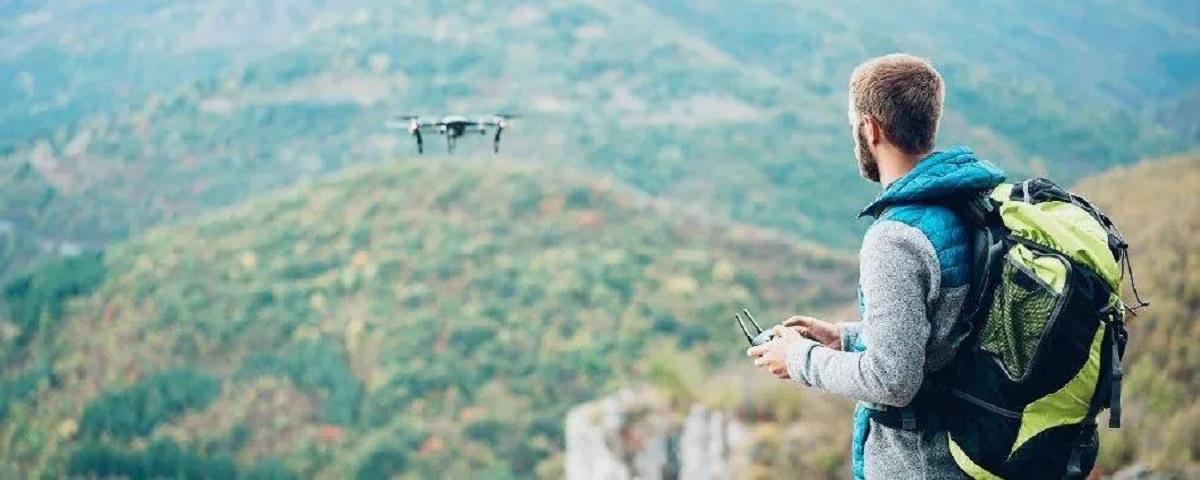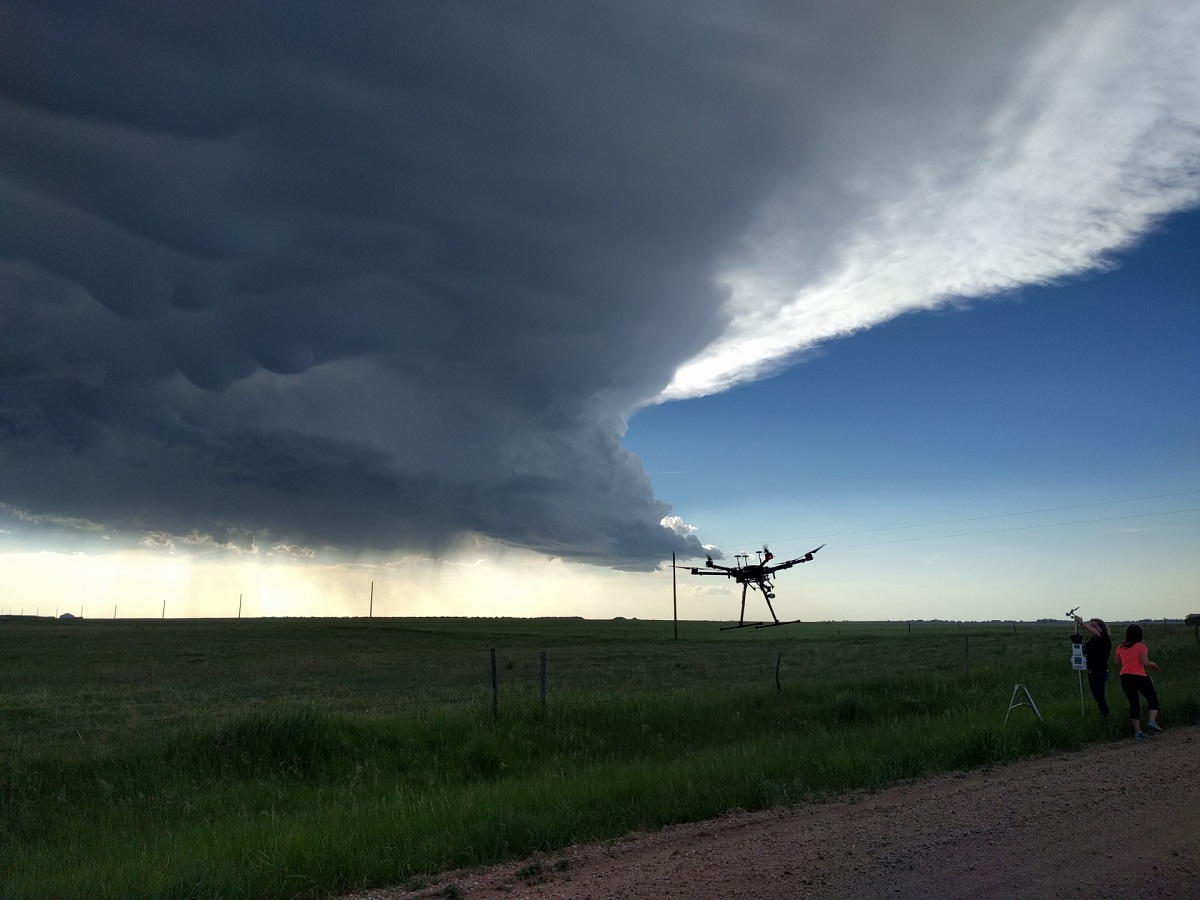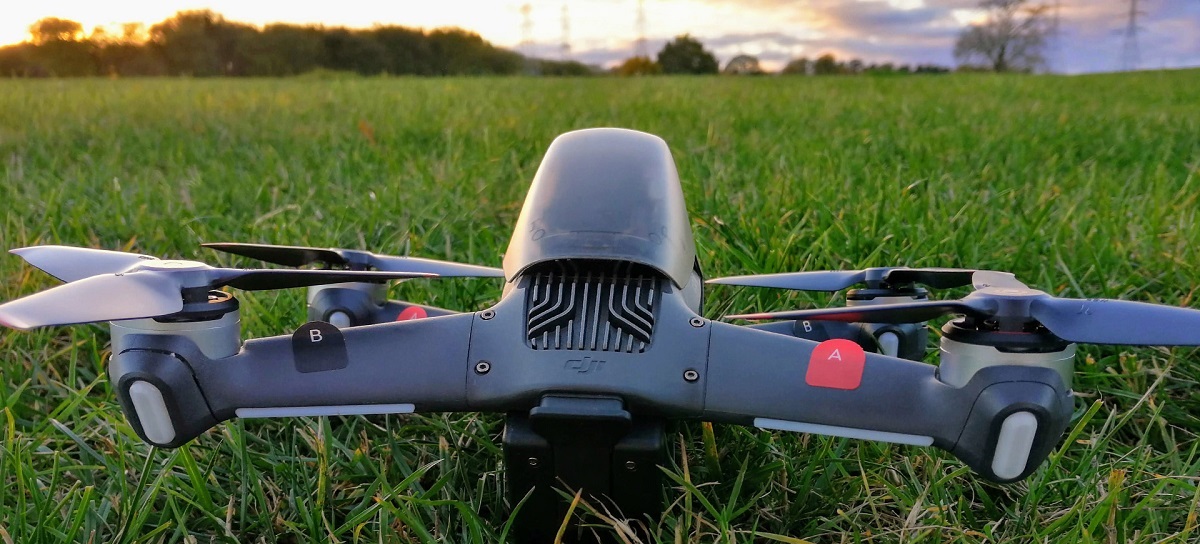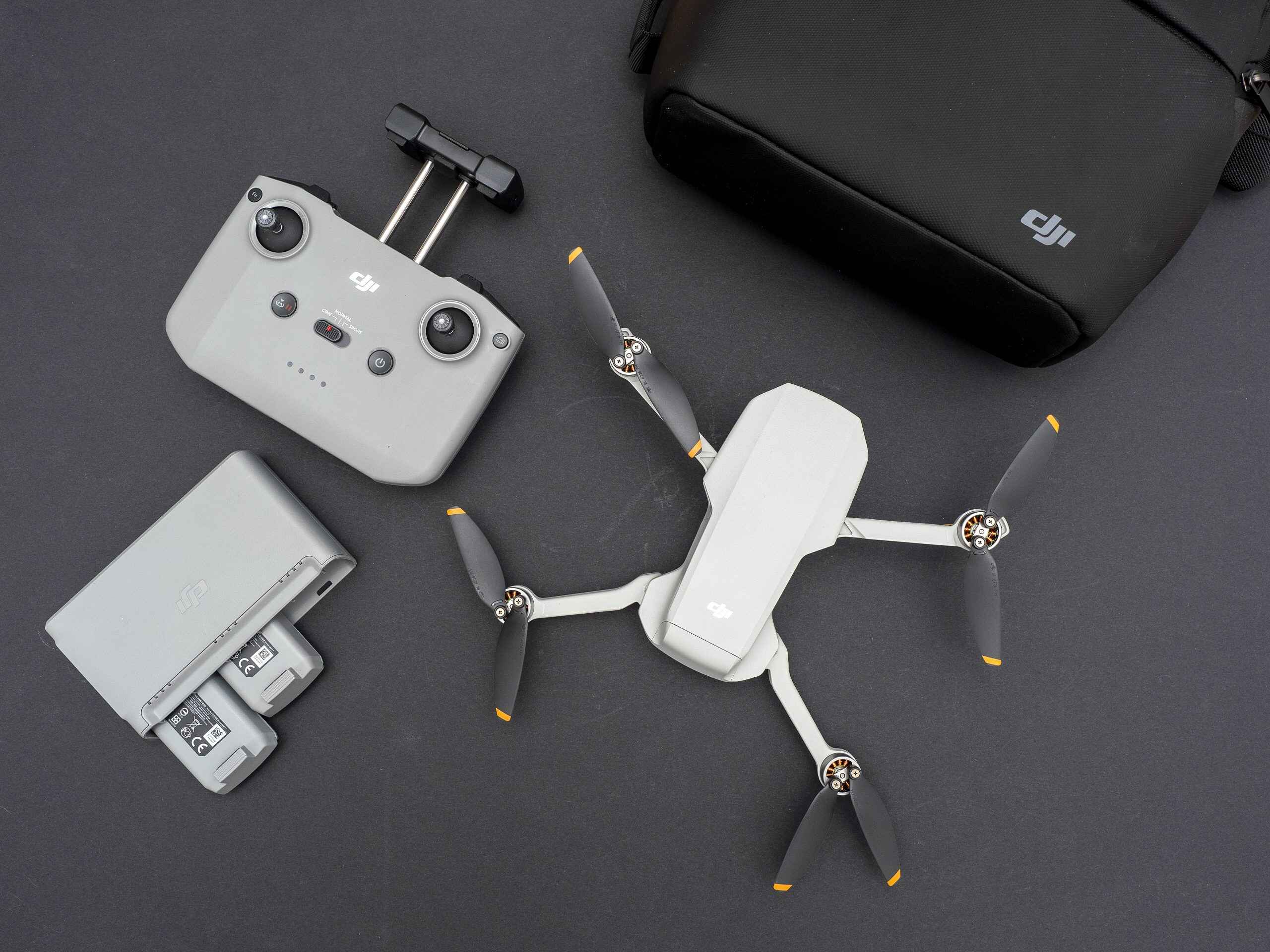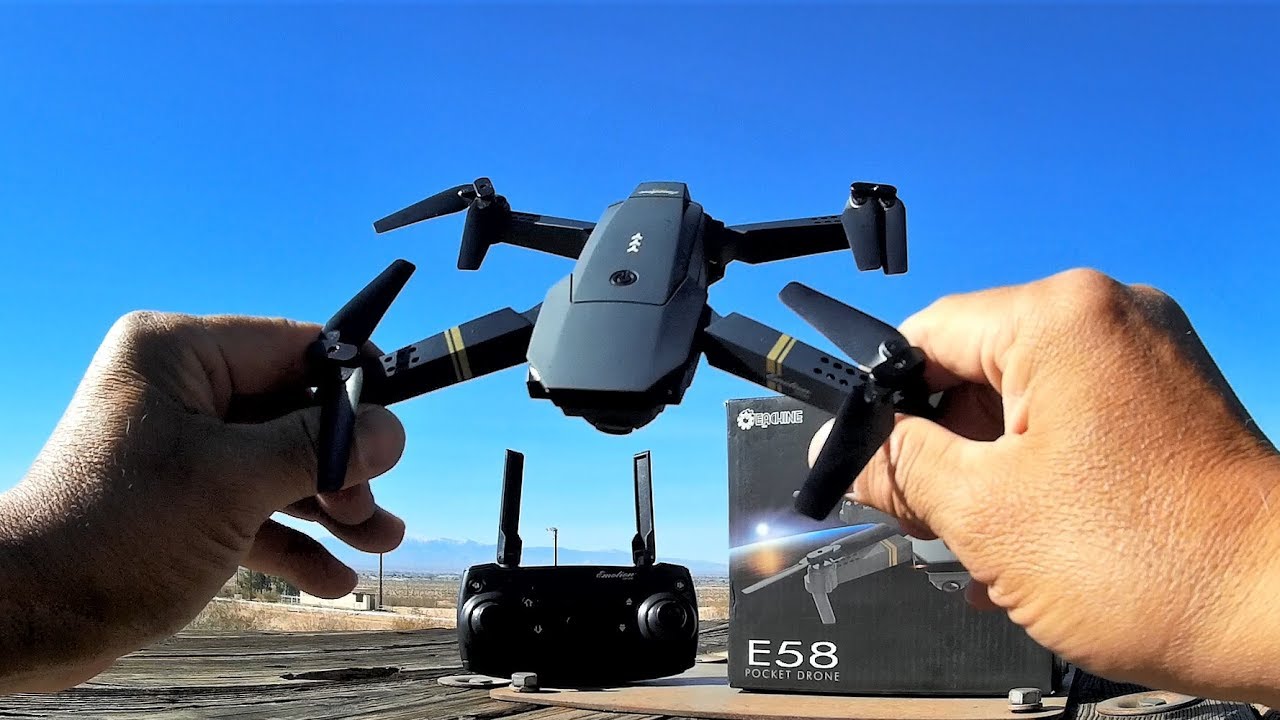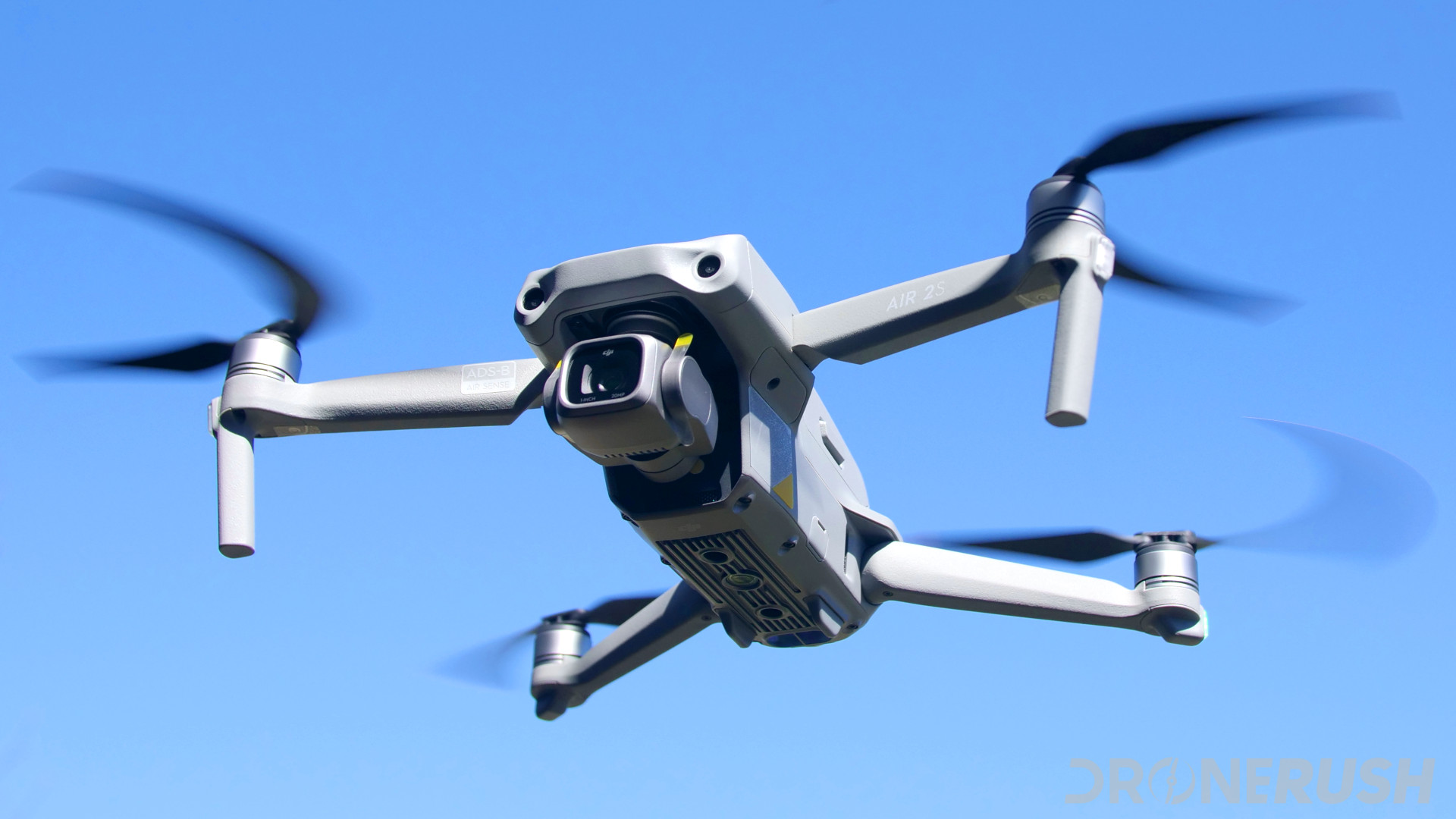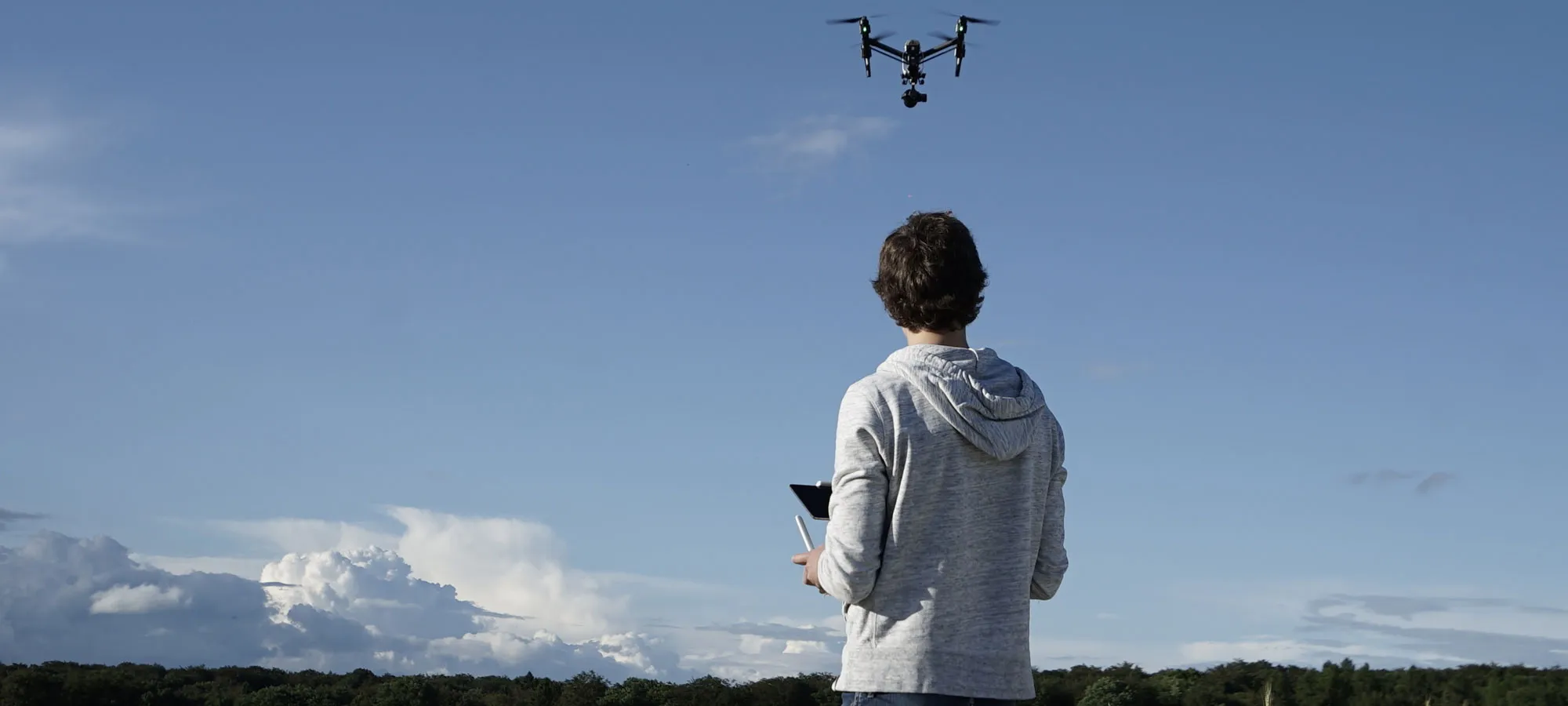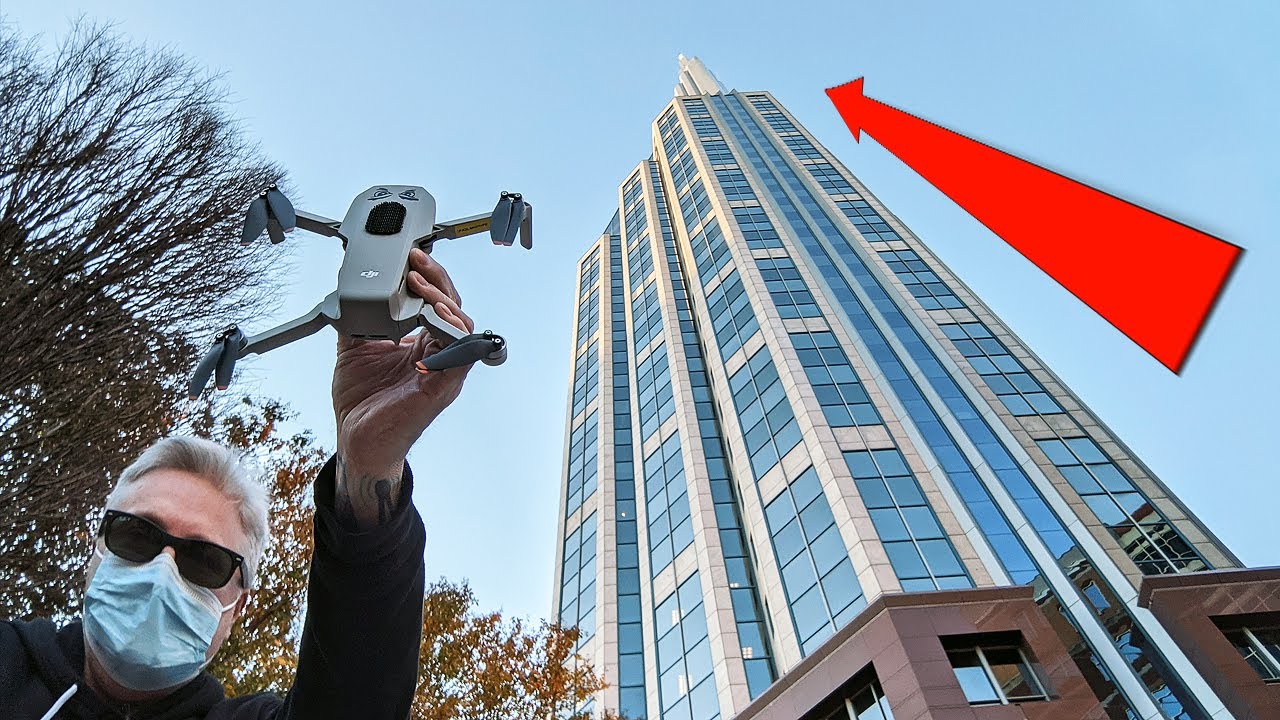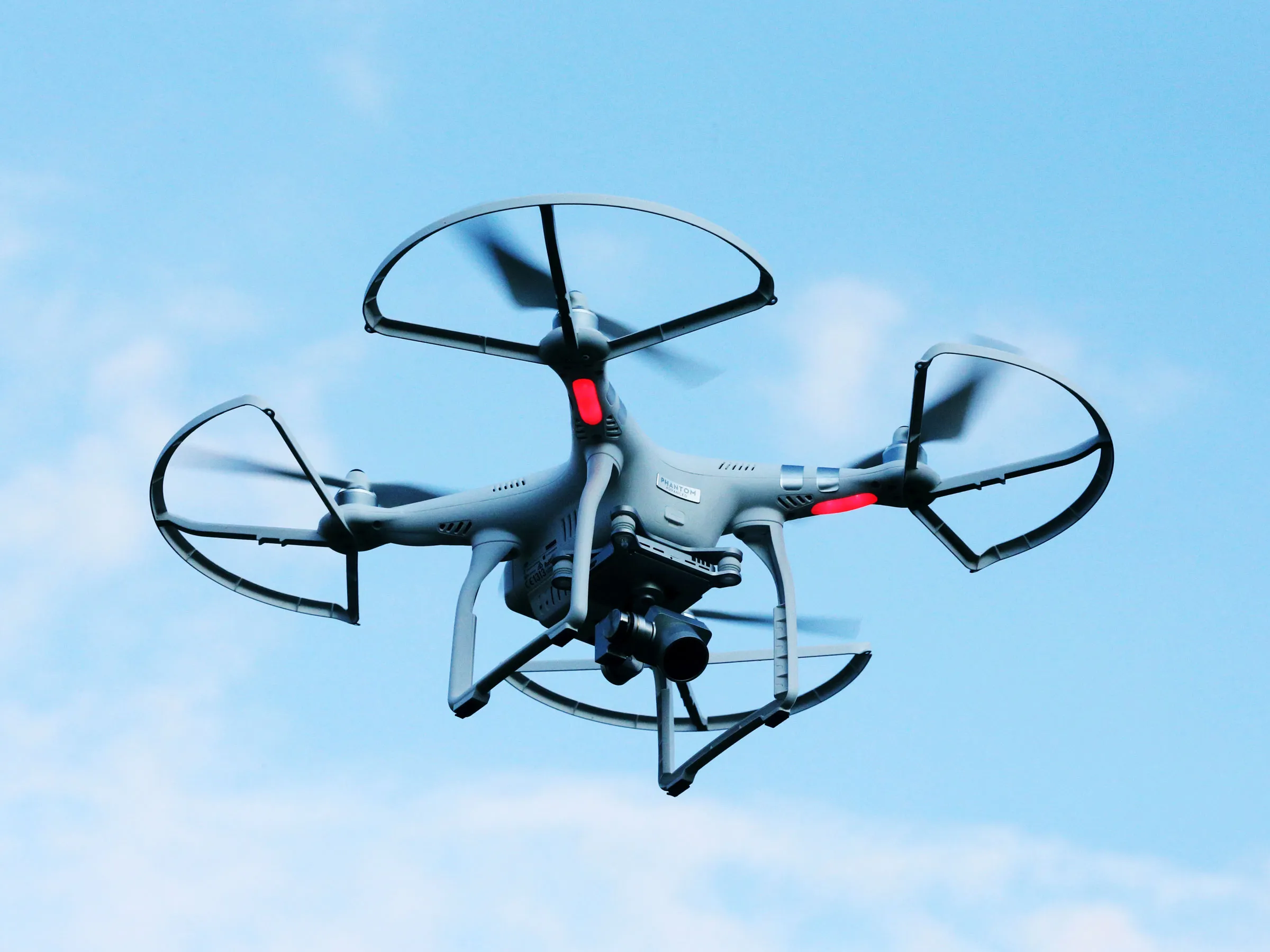Introduction
Unmanned aerial vehicles, commonly known as drones, have revolutionized various industries with their advanced capabilities. From aerial photography and videography to delivery services and surveying, drones have become indispensable tools. One question that often arises is, “How high can a drone fly?” The altitude limit of a drone depends on several factors, including technical specifications, regulations, and safety considerations.
In this article, we will explore the factors that determine the maximum altitude a drone can reach and discuss the regulations set by the Federal Aviation Administration (FAA) regarding drone altitude limits. We will also delve into the difference between commercial and recreational drones in terms of their allowed altitude limits. Furthermore, we will examine some notable examples of high altitude drone flights and discuss the safety precautions necessary when flying at extreme heights. Additionally, we will highlight popular drones known for their high altitude capabilities.
By understanding the factors that impact a drone’s maximum altitude and complying with regulations and safety guidelines, drone enthusiasts, hobbyists, and professionals can make informed decisions about flying their drones at optimal heights to achieve their goals.
Factors that Determine How High a Drone Can Fly
Several factors play a crucial role in determining the maximum altitude that a drone can reach. Understanding these factors is essential for drone enthusiasts to operate their devices safely and effectively. Let’s take a closer look at these key factors:
- Battery Life: The battery life of a drone directly influences its maximum flight altitude. Drones with longer battery lives can stay in the air for a more extended period, allowing them to reach higher altitudes.
- Motor Power: The power and efficiency of the drone’s motors impact its ability to ascend to higher altitudes. Drones equipped with more powerful motors tend to have a higher maximum altitude.
- Aerodynamics: The design and aerodynamics of a drone can impact its performance at high altitudes. Drones with sleek and streamlined designs experience less air resistance, making it easier for them to climb to greater heights.
- Weight: The weight of a drone can influence its maximum altitude. Lighter drones typically have an advantage in terms of altitude as they require less power to lift off the ground and can ascend higher.
- GPS Technology: Drones equipped with advanced GPS technology can accurately navigate and maintain their position at higher altitudes. GPS systems also provide valuable altitude information, ensuring safe and controlled flights.
In addition to these technical factors, environmental conditions can also affect a drone’s maximum altitude. Atmospheric conditions, including temperature, air density, and wind speed, can impact the flight capabilities of a drone. Higher altitudes often feature thinner air, which can reduce the drone’s maximum altitude due to decreased lift.
It’s important for drone pilots to take these factors into account when determining how high their drone can safely fly. By considering these variables, pilots can optimize their drone’s performance and ensure a smooth and successful flight experience.
FAA Regulations on Drone Altitude
The Federal Aviation Administration (FAA), responsible for regulating the national airspace in the United States, has established guidelines and regulations regarding the altitude at which drones can operate. These regulations are in place to ensure the safety of both manned and unmanned aircraft and to prevent potential collisions or interference with other airspace users. Understanding and adhering to these regulations is crucial for all drone operators. Here are the key FAA regulations on drone altitude:
- Recreational Drones: If you are flying a recreational drone for recreational purposes, the FAA requires you to keep your drone below an altitude of 400 feet above ground level (AGL). This limitation helps maintain separation between recreational drones and other aircraft operating at higher altitudes.
- Visual Line of Sight: According to FAA regulations, drone operators must maintain visual line of sight (VLOS) with their drone at all times. This means you should be able to see your drone without the use of binoculars or other visual aids. VLOS requirements help ensure safe and responsible drone operation and also help maintain control over the drone’s altitude.
- Permission for Higher Altitudes: If drone operators need to fly their drones above the 400 feet AGL limit for specific purposes (such as aerial photography, commercial inspections, or research), they are required to obtain a waiver from the FAA. Waivers typically involve demonstrating the necessary safety measures and procedures for operating at higher altitudes.
- Restricted Airspace: There are certain areas where drone flights are restricted due to security concerns or the presence of other airspace users. These restricted zones, such as airports, military facilities, national parks, and stadiums, have specific no-fly restrictions. Drone operators must familiarize themselves with restricted airspace rules and adhere to them strictly to avoid any legal or safety complications.
It’s important for drone operators to stay updated on the latest FAA regulations and any changes or new requirements that may be implemented. Failure to comply with these regulations can result in fines, legal consequences, or the suspension of drone privileges.
By following the FAA guidelines on drone altitude, drone operators can ensure safe and responsible operation of their drones while minimizing the risk of incidents or interference with other airspace users.
Commercial Drones vs Recreational Drones Altitude Limits
When it comes to drone altitude limits, there is a distinction between commercial drones and recreational drones. The Federal Aviation Administration (FAA) has defined different regulations and altitude limits for these two categories. Let’s explore the differences:
Recreational Drones:
For recreational drone operators, the FAA has set a maximum altitude limit of 400 feet above ground level (AGL). This altitude restriction serves to ensure the safety of both the drone operator and other manned aircraft in the airspace. By limiting recreational drones to a maximum height of 400 feet, they are kept at a safe distance from commercial planes and helicopters, reducing the risk of potential collisions.
It’s important for recreational drone pilots to keep in mind that exceeding the altitude limit can result in legal consequences and jeopardize the safety of other airspace users. Additionally, compliance with the visual line of sight (VLOS) rule is essential – recreational drone pilots must be able to maintain direct visual contact with their drones at all times.
Commercial Drones:
Unlike recreational drones, commercial drones have the potential to operate at higher altitudes with the appropriate permissions and waivers from the FAA. For specific purposes such as aerial photography, videography, surveying, or inspecting tall structures, commercial drone operators can request a waiver to fly above the 400 feet AGL limit.
Commercial operators seeking a waiver must submit a detailed application outlining their intentions, safety measures, and precautions to ensure the safe operation of the drone at higher altitudes. The FAA carefully reviews these requests and grants waivers on a case-by-case basis. It’s crucial for commercial drone operators to adhere to the conditions and limitations specified in their approved waivers.
While commercial drones have the potential for higher altitude operations, operators must still consider the safety of other aircraft and comply with airspace rules and regulations. Just like recreational drone pilots, commercial drone operators must maintain visual line of sight and avoid restricted airspace to ensure safe and responsible drone operations.
By understanding and complying with the different altitude limits for commercial and recreational drones, operators can safely and legally operate their drones while reaping the benefits of these versatile and powerful aerial tools.
Examples of High Altitude Flights by Drones
Drones have shown remarkable capabilities when it comes to reaching high altitudes for various purposes. Let’s explore some examples of drone flights that have pushed the boundaries of altitude:
1. DJI Matrice 600 Pro at Mount Everest:
In 2018, an expedition team successfully flew a DJI Matrice 600 Pro drone to an altitude of 8,848 meters (29,029 feet), the summit of Mount Everest. Equipped with specialized batteries and operating under extreme weather conditions, the drone captured breathtaking aerial footage of the world’s highest peak, providing a perspective previously unseen.
2. Atmos UAV Marlyn in the Alps:
The Atmos UAV Marlyn, a versatile mapping and surveying drone, has been used for high altitude flights in the Alps. It has demonstrated its capabilities by reaching altitudes of over 4,000 meters (13,000 feet) in mountainous regions. This drone is specifically designed for challenging environments, allowing for detailed surveys and mapping of remote areas.
3. NASA’s Perseverance Rover Entry, Descent, and Landing:
Although not a traditional commercial drone, NASA’s Perseverance rover’s entry, descent, and landing sequence on Mars can be considered an impressive high-altitude flight. The drone-like system carried the rover through the Martian atmosphere, where it autonomously adjusted its altitude and speed to ensure a safe landing on the planet’s surface.
4. Racing Drones at Drone Racing League (DRL) Events:
Drone racing enthusiasts utilize high-performance racing drones to compete at adrenaline-fueled events, such as those organized by the Drone Racing League (DRL). These drones are known to reach speeds of over 100 miles per hour and can maneuver through challenging courses, often requiring quick climbs and descents at considerable altitudes.
These examples showcase the remarkable capabilities of drones to operate at high altitudes. From capturing breathtaking views of scenic landscapes to conducting scientific research and exploration, drones have proven their potential in various applications at extreme heights.
It’s important to note that these high altitude flights require careful planning, specialized equipment, and adherence to safety protocols to ensure the successful operation of the drones and the safety of other airspace users.
Safety Precautions for Flying Drones at High Altitudes
Flying drones at high altitudes can be thrilling and offer unique perspectives, but it comes with increased risks and challenges. To ensure the safety of the drone, other airspace users, and the surrounding environment, drone operators must take specific precautions. Here are some essential safety measures for flying drones at high altitudes:
- Check Weather Conditions: Before flying at high altitudes, it’s crucial to monitor weather conditions. Strong winds, storms, or extreme temperatures can adversely affect the drone’s stability and control, so it’s important to choose suitable weather conditions for high altitude flights.
- Verify GPS Signal: High altitude flights often rely on GPS technology for navigation and position tracking. Before taking off, ensure that your drone has a strong GPS signal and is accurately calibrated. This will help maintain control and stability during the flight.
- Monitor Battery Life: When flying at high altitudes, drones consume more energy due to the increased power required for stability and maneuverability. Keep a close eye on the drone’s battery life and always have enough power to safely return to the ground. Consider shorter flight durations and carry spare batteries if necessary.
- Understand Airspace Restrictions: Be aware of any airspace restrictions, especially in areas near airports, military bases, or other no-fly zones. Ensure that you are flying within permitted areas and maintaining the required distance from restricted airspace.
- Maintain Visual Line of Sight: Regardless of altitude, it’s crucial to maintain visual contact with the drone. Flying beyond your line of sight increases the risk of collisions with other aircraft or obstacles. If necessary, use a spotter to help maintain constant visual contact with the drone.
- Plan for Emergencies: Always be prepared for emergencies, such as loss of control, signal interference, or motor failure. Familiarize yourself with the emergency procedures for your drone, including how to initiate a safe descent in case of any unforeseen circumstances.
- Practice Safe Landing Procedures: Landing a drone at high altitudes requires careful control and precision. Choose a suitable landing area away from obstacles or potential hazards, and practice landing techniques to ensure a smooth and safe descent.
- Adhere to Local Regulations: Drone regulations may vary depending on the location and country. Be familiar with the specific regulations and permits required for high altitude flights in your area, and ensure full compliance to avoid legal issues.
By following these safety precautions, drone operators can mitigate risks and ensure safe flights at high altitudes. Prioritizing safety not only protects the drone and equipment but also maintains the integrity of the airspace and fosters responsible drone operations.
Popular Drones Known for Their High Altitude Capabilities
As technology continues to advance, drones with impressive altitude capabilities have become increasingly popular among enthusiasts and professionals. Here are some popular drones known for their ability to reach high altitudes:
1. DJI Phantom 4 Pro:
The DJI Phantom 4 Pro is renowned for its advanced features and high altitude capabilities. With a powerful propulsion system and stability in windy conditions, this drone can reach altitudes of up to 19,685 feet (6,000 meters). Its intelligent flight modes and obstacle avoidance system further enhance its performance and safety during high altitude operations.
2. Autel Robotics Evo II:
The Autel Robotics Evo II is a versatile drone that offers impressive altitude capabilities. With a maximum flight altitude of 9,840 feet (3,000 meters), this drone can capture stunning aerial footage without compromising on stability and control. It also features multiple intelligent flight modes and a 40-minute flight time, making it a reliable choice for high altitude operations.
3. Yuneec Typhoon H Pro:
The Yuneec Typhoon H Pro is another popular drone capable of reaching high altitudes. Equipped with six rotors, this hexacopter can ascend to altitudes of up to 16,404 feet (5,000 meters) with ease. It offers advanced flight modes, 4K video recording, and obstacle avoidance features, making it a favorite among professional drone operators.
4. Freefly Alta 6:
The Freefly Alta 6 is a professional-grade drone known for its exceptional altitude capabilities and heavy-lift capacity. This hexacopter can carry payloads of up to 15 pounds and fly at altitudes of over 10,000 feet (3,048 meters). Designed for cinematographers and filmmakers, the Alta 6 provides smooth and stable flights even in demanding high altitude situations.
5. PowerVision PowerEgg X:
The PowerVision PowerEgg X is a unique drone that stands out for its versatility and altitude capabilities. Designed for both aerial photography and underwater exploration, this foldable drone can fly at altitudes of up to 16,000 feet (4,875 meters). Its waterproof feature further extends its capabilities beyond the skies.
While these drones are known for their high altitude capabilities, it’s essential to note that operating at extreme altitudes comes with increased risks. Pilots must adhere to safety guidelines and regulations, practice responsible flying, and ensure proper training and experience before attempting high altitude operations.
By utilizing drones with impressive altitude capabilities, enthusiasts and professionals can explore new heights and capture breathtaking aerial footage for a wide range of applications, including photography, videography, surveying, and more.
Conclusion
Flying drones at high altitudes presents unique opportunities and challenges for drone operators. Understanding the factors that determine a drone’s maximum altitude, complying with FAA regulations, and taking necessary safety precautions are essential for a safe and successful flight experience.
We explored the factors that affect a drone’s maximum altitude, including battery life, motor power, aerodynamics, weight, and GPS technology. These technical aspects play a crucial role in determining how high a drone can fly and its overall performance.
The Federal Aviation Administration (FAA) has set regulations regarding drone altitude limits to ensure the safety of both drones and other airspace users. Recreational drone pilots should keep their drones below 400 feet above ground level (AGL), while commercial operators can request waivers for higher altitudes based on specific needs and safety measures.
Examples of high altitude flights by drones demonstrated the capabilities of drones to reach extreme heights, capturing stunning aerial footage and conducting scientific research. However, these flights require careful planning, equipment, and adherence to safety protocols.
When flying drones at high altitudes, it’s important to take safety precautions such as checking weather conditions, maintaining visual line of sight, monitoring battery life, and understanding airspace restrictions. By following these precautions, drone operators can mitigate risks and ensure safe flights at higher altitudes.
Popular drones known for their high altitude capabilities were also highlighted, showcasing the advancements in drone technology. These drones offer impressive altitudes, stability, advanced features, and payload capacities, catering to the needs of drone enthusiasts and professionals alike.
In conclusion, navigating the world of high altitude drone flights requires knowledge, responsibility, and adherence to regulations. With the right preparation, equipment, and safety precautions, drone operators can push the boundaries of exploration, capture breathtaking footage, and utilize drones to their full potential at higher altitudes.







